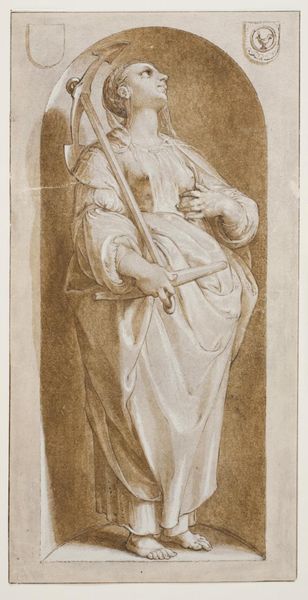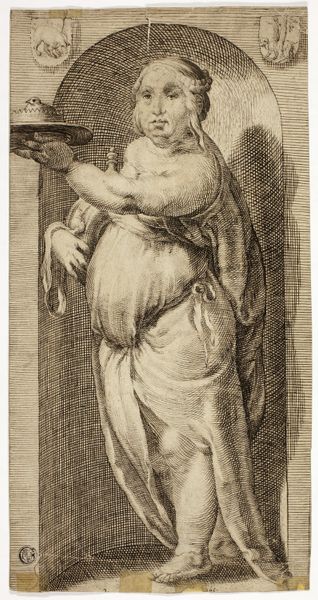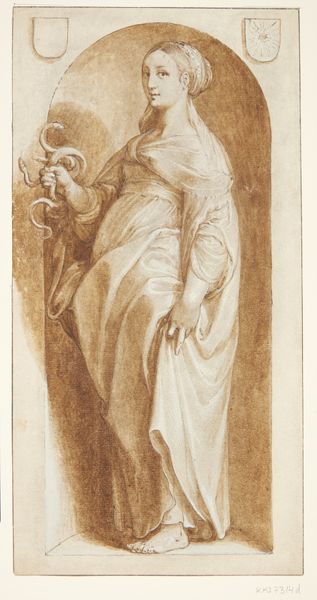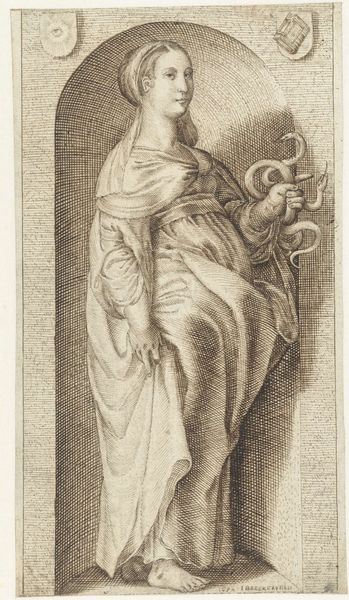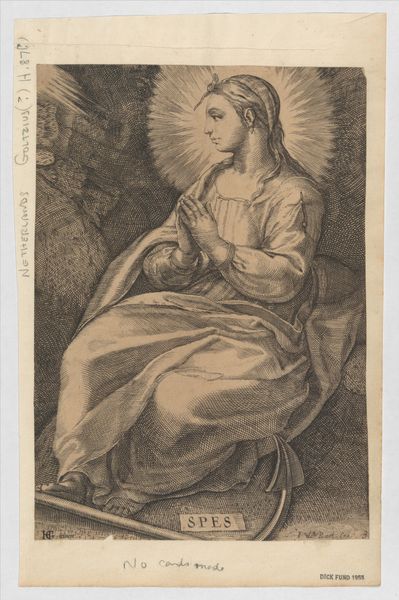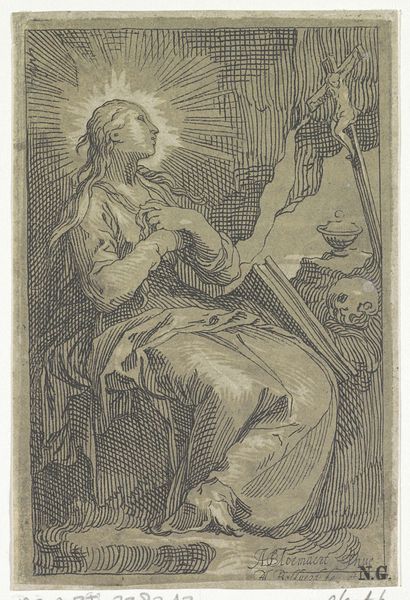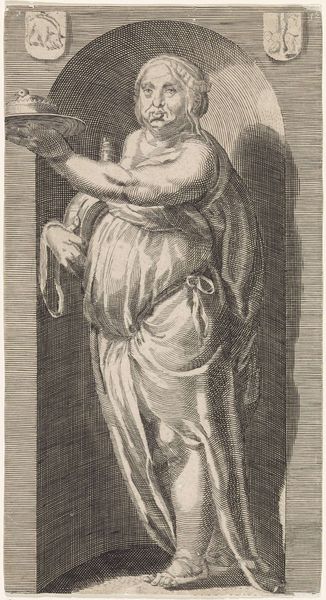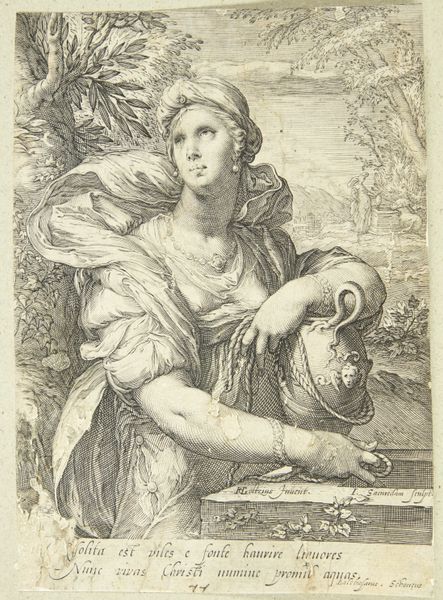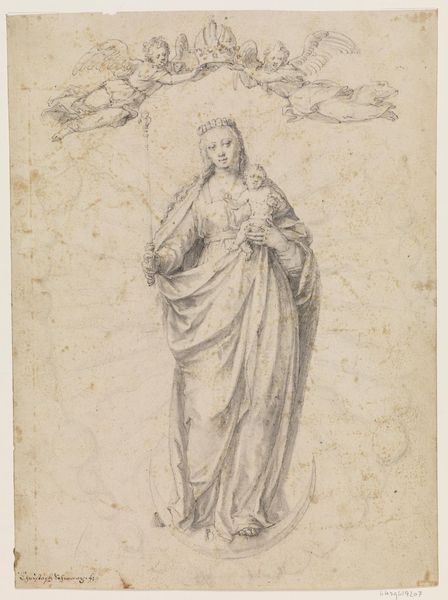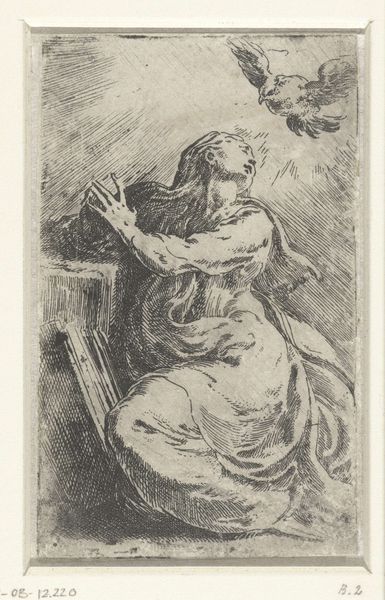
drawing, print, etching
#
portrait
#
drawing
#
baroque
# print
#
etching
#
figuration
#
portrait drawing
Dimensions: height 222 mm, width 140 mm
Copyright: Rijks Museum: Open Domain
Curator: What a fascinating print! This etching by Jan de Bisschop, likely created between 1666 and 1671, goes by the title "Mirjam, de zus van Mozes of een Sibille," which translates to "Miriam, the Sister of Moses, or a Sibyl." It’s currently held at the Rijksmuseum. Editor: The textures are incredible! The draping of her robes creates so much visual interest with just the gradations of the etched lines. There's a softness despite the relative starkness of the monochrome. Curator: The ambiguity of the title speaks volumes, doesn't it? It suggests a layering of identities, connecting a biblical figure, Miriam, known for her prophetic song, with the classical image of a Sibyl, a Greco-Roman oracle. The book she holds could symbolize either the Torah or prophetic texts. It conflates cultures. Editor: The figure almost entirely fills the frame. You could easily analyze this using Panofsky's levels—at first glance, we simply perceive a woman with a book, well lit in the foreground, and the artist used shadow effectively to convey her garments’ folds. I notice the composition hinges on diagonal lines—her seated posture, the tilt of the book, even the shadows create dynamism. Curator: Exactly. The diagonals contribute to the work's almost ethereal feel. I am intrigued by her gaze as she avoids directly engaging the viewer, lending an air of introspection or perhaps divine inspiration. The details—the delicate lines of her hair, the almost transparent fabric—these whisper stories of both faith and classical learning in 17th century Netherlands. Editor: I suppose her turning away from us invites a question about authorship, intention and affect… as opposed to simply beholding or perceiving her as a female. Curator: An apt point! It’s these interwoven layers that make Bisschop's work so compelling. The artist creates this ambiguity that really allows the viewer to reflect upon these archetypes of female wisdom and their influence. Editor: Ultimately, beyond all its cultural nuances, what stays with me is the beauty and control with which de Bisschop uses only line to craft this rich texture.
Comments
No comments
Be the first to comment and join the conversation on the ultimate creative platform.
